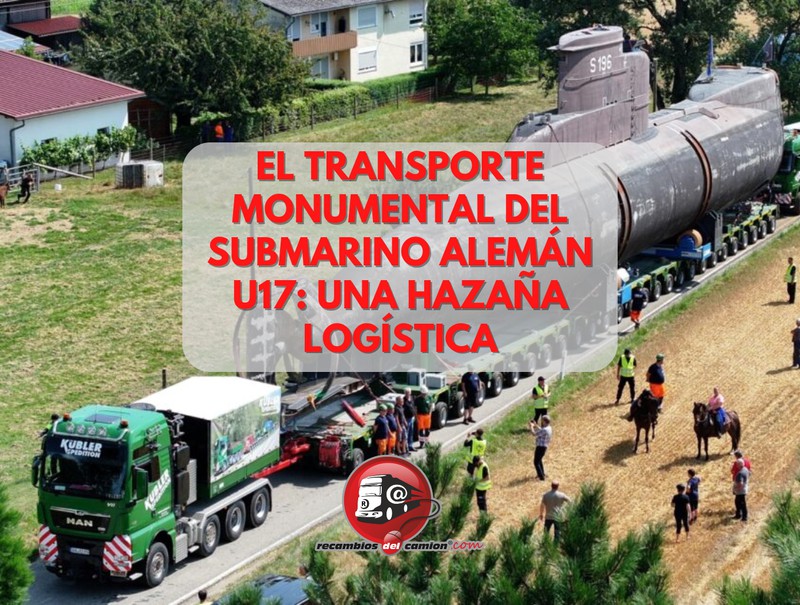The monumental transport of the German submarine U17: A logistical feat
The road transport of a World War II submarine has become a historic event that has captured the attention of thousands of people around the world. This colossal U-boat, 50 metres long and weighing 350 tonnes, made an impressive 39-kilometre journey to its final destination at the Technik-Museum in Sinsheim. The logistical feat, which included crossing rivers and adapting roads, was broadcast live on YouTube, allowing viewers to follow every detail of this unique operation. Find out how this incredible challenge was achieved!

The transport of a World War II submarine by road has become a historic and media event, both for the magnitude of the operation and for its live broadcast on YouTube. This event has captured the attention of thousands of people around the world, who followed each stage of the journey of a U-boat U17 that belonged to the German Navy. This war vehicle, which will now be exhibited in a museum, has had a final journey worthy of its historical importance.
The U17, the protagonist of this fascinating story, is a submarine of impressive dimensions. At 50 metres long, 4.6 metres wide and weighing 350 tonnes, this submarine measures the same as 12 cars. It was used by the German army from 1973 to 2010 and had the capacity to accommodate 23 crew members. After its retirement, it was decided that the U17 should find its final place in a specialist museum in Germany, which gave rise to an unprecedented logistical operation.
The transfer of the U-17 was no easy task. It required a full year of preparation and meticulous coordination to ensure that everything went according to plan. The transport company Kübler was responsible for this operation, using a converted MAN truck with a 30-axle platform, which added 150 tonnes to the total weight. This truck had to travel 39 kilometres, a relatively short distance, but fraught with logistical challenges.
The submarine's journey included both river and road sections. Several major rivers had to be crossed, such as the Rhine and Neckar, which involved tilting the submarine at 70 degrees on a platform to navigate sideways. On the road, the convoy's speed did not exceed 10 km/h, and various adaptations to the road infrastructure were necessary, such as dismantling road signs and traffic lights.
The scale of the event attracted the attention of many curious people, who came out to watch the colossal convoy pass by. The organisers of the transfer facilitated public access by detailing the different stages of the journey and broadcasting the entire process live on YouTube. This decision not only allowed more people to witness the event, but also added an element of transparency and education, showing the complex logistical processes behind such operations.
After four weeks of hard work and planning, the U-17 has successfully arrived at its final destination: the Technik-Museum in Sinsheim, south-west Germany. The museum has given it a prime location, where visitors from all over the world can admire this impressive submarine and learn more about its history and World War II naval technology.
The transfer of the U17 submarine is a prime example of how history and technology can be combined to create unique events that capture the public's imagination. It also demonstrates the human ability to plan and execute large-scale logistical tasks. The live broadcast on YouTube made this event not only a success in terms of logistics, but also a media event that brought history to millions of people around the world.





Receive our news